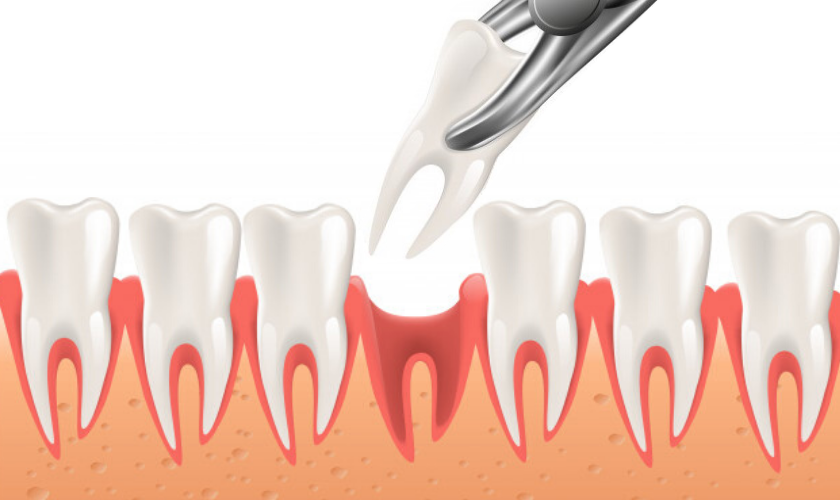What is Tooth extraction?
Tooth extraction is the removal of a tooth from its socket in the bone. If you are facing a tooth extraction, it can seem a little daunting and nerve-wracking. But did you know that tooth extraction is a relatively standard dental procedure? Let’s face the fear together.
What Happens
If you need an extraction, our dentist will first numb the area to lessen any discomfort. After the extraction the dentist will advise you of what post extraction regimen to follow. In most cases a small amount of bleeding is normal. Your mouth will slowly fill in the bone where the tooth root was through the formation of a blood clot.
Here are some tips to follow to make recovery easier:
- Avoid anything that might prevent normal healing.
- Don’t smoke or rinse your mouth vigorously.
- Avoid drinking through a straw for 24 hours.
- Follow the diet your dentist suggests.
Types of Tooth Extraction
There are two types of extractions you might have:
- A simple extraction is the removal of a tooth that is visible in your mouth. It’s common for a general dentist to perform simple extractions. During a simple extraction, your dentist will numb the tooth and gum tissue and loosen the tooth with an instrument called an elevator before removing it with dental forceps.
- A surgical extraction is a more complex procedure used for a tooth that may have broken off at the gum line or has not come into the mouth yet. Oral surgeons usually perform surgical extractions; however, general dentists can perform them as well. During a surgical extraction, the doctor will make a small incision (cut) into your gum and remove the underlying tooth.
After the Extraction
The most important thing to keep up with after a tooth extraction, is keeping the area clean and preventing infection. Immediately following the procedure, your dentist might ask you to bite down gently on a piece of dry, sterile gauze, which you should keep in place for up to 30 to 45 minutes to limit bleeding, while clotting takes place. Your dentist will provide you with detailed aftercare instructions, but for 24 hours following your extraction, you shouldn't smoke, rinse your mouth vigorously, or clean the teeth next to the extraction site.
There are two types of extractions you might have:
- A simple extraction is the removal of a tooth that is visible in your mouth. It’s common for a general dentist to perform simple extractions. During a simple extraction, your dentist will numb the tooth and gum tissue and loosen the tooth with an instrument called an elevator before removing it with dental forceps.
- A surgical extraction is a more complex procedure used for a tooth that may have broken off at the gum line or has not come into the mouth yet. Oral surgeons usually perform surgical extractions; however, general dentists can perform them as well. During a surgical extraction, the doctor will make a small incision (cut) into your gum and remove the underlying tooth.


